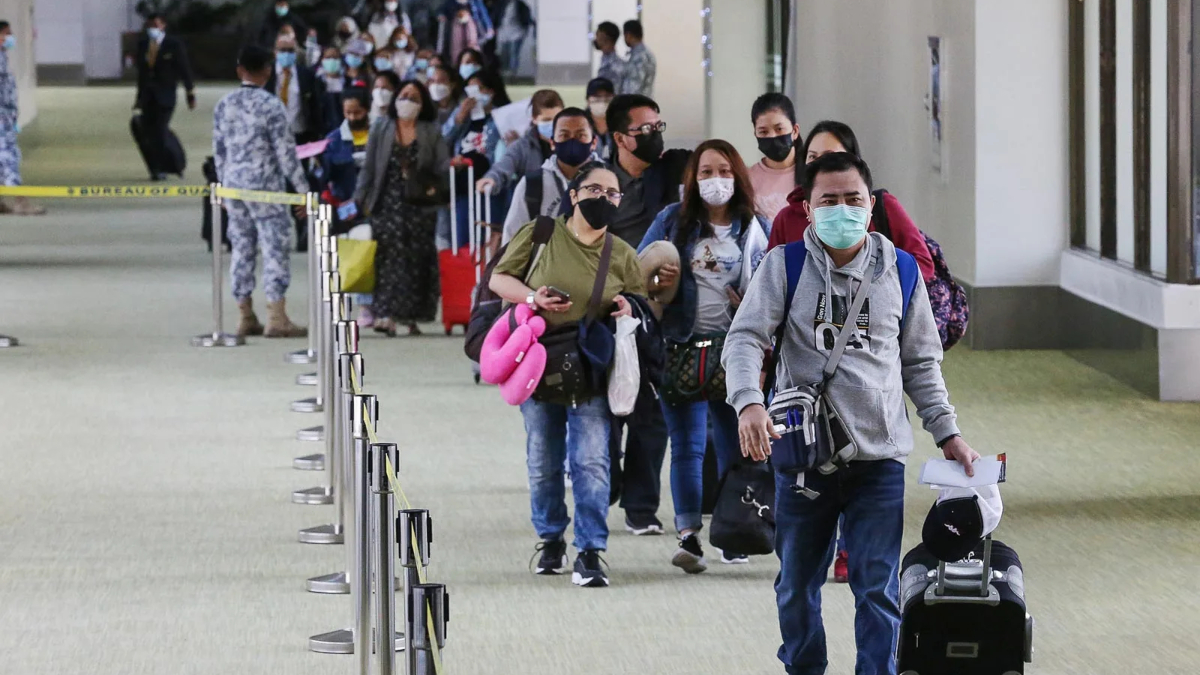The number of Filipinos working overseas reached 2.16 million between April and September 2023, a 9.8 percent increase compared to the 1.96 million recorded in the same period in 2022, according to data released by the Philippine Statistics Authority (PSA).
Overseas contract workers (OCWs) made up the bulk of the workforce at 98.1 percent, while 1.9 percent were employed full-time under tourist, visitor, student, or medical visas.
The PSA data also revealed that women accounted for a significant portion of the workforce, with 1.20 million, or 55.6 percent, being female. Age-wise, those aged 45 and over made up the largest group of Filipino workers at 24.1 percent, followed by the 30-34 age bracket at 23.5 percent and the 35-39 group at 18.6 percent.
Geographically, most overseas Filipino workers (OFWs) came from Luzon, comprising 66 percent of the total, followed by Mindanao at 17.6 percent, and Visayas at 16.5 percent.
Among male OFWs, those aged 45 and older formed the largest group at 29.2 percent, which was 9.2 percentage points higher than their female counterparts in the same age range.
In terms of job categories, 41.1 percent of OFWs were employed in elementary jobs, performing simple tasks. Service and sales roles followed at 14.7 percent, with plant and machine operators and assemblers making up 12.1 percent of the workforce.
Most OFWs were deployed across Asia, accounting for 77.4 percent, followed by North and South America at 9.8 percent, Europe at 8.4 percent, Australia at 3.0 percent, and Africa at 1.3 percent. Saudi Arabia remained the top destination for Filipino workers, hosting 20 percent of the workforce, while the UAE came second with 13.6 percent. Singapore had the smallest share, with 3.9 percent of Filipino workers.
Rizal Commercial Banking Corp. chief economist Michael Ricafort attributed the rise in overseas Filipino workers to better wages and benefits abroad. He also highlighted the robust diplomatic relations between the Philippines and Saudi Arabia as a key factor in the increase of workers in the Middle East.
“This is a win-win for both the host countries for OFWs and for the Philippines since OFW remittances are more than $40 billion per year, or the fourth largest in the world after India, Mexico, and China,” Ricafort said.
The PSA also reported that 37.3 percent of OFWs sent cash remittances ranging from P40,000 to P100,000, while 30.9 percent sent at least P100,000. However, 12.4 percent of workers did not send any cash remittances during this period.
Total remittances during the period amounted to P238.63 billion, including P187.11 billion in cash, P44.70 billion in cash brought home, and P6.81 billion in kind. The average remittance sent was P123,000, up from P111,000 in 2022. Asian countries were the largest contributors to cash remittances, accounting for 69.1 percent, or P129.20 billion, of the total.





